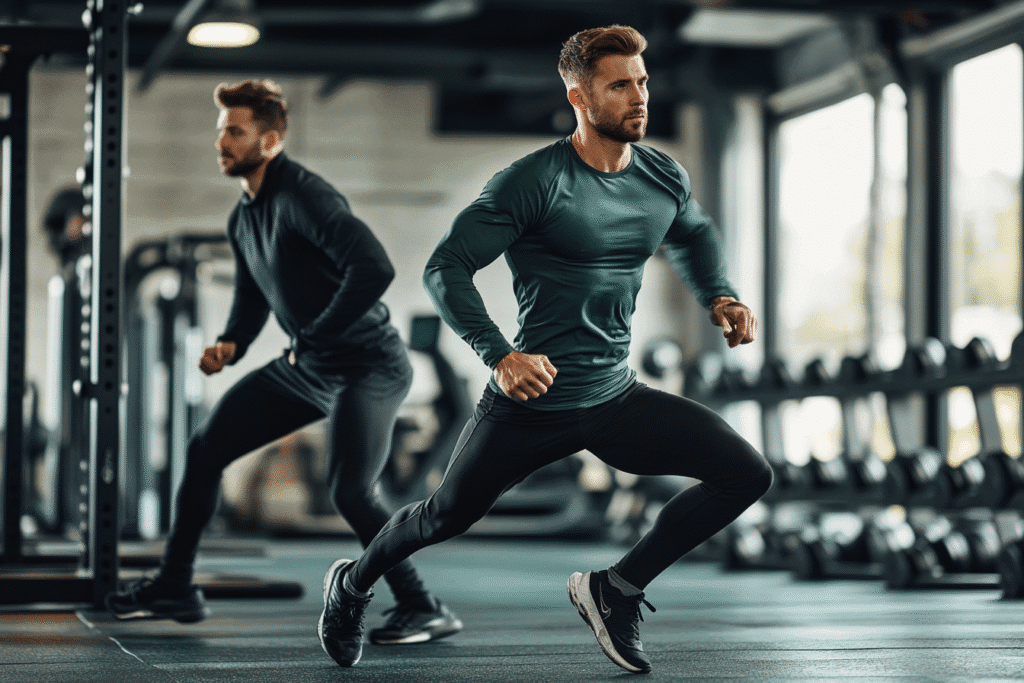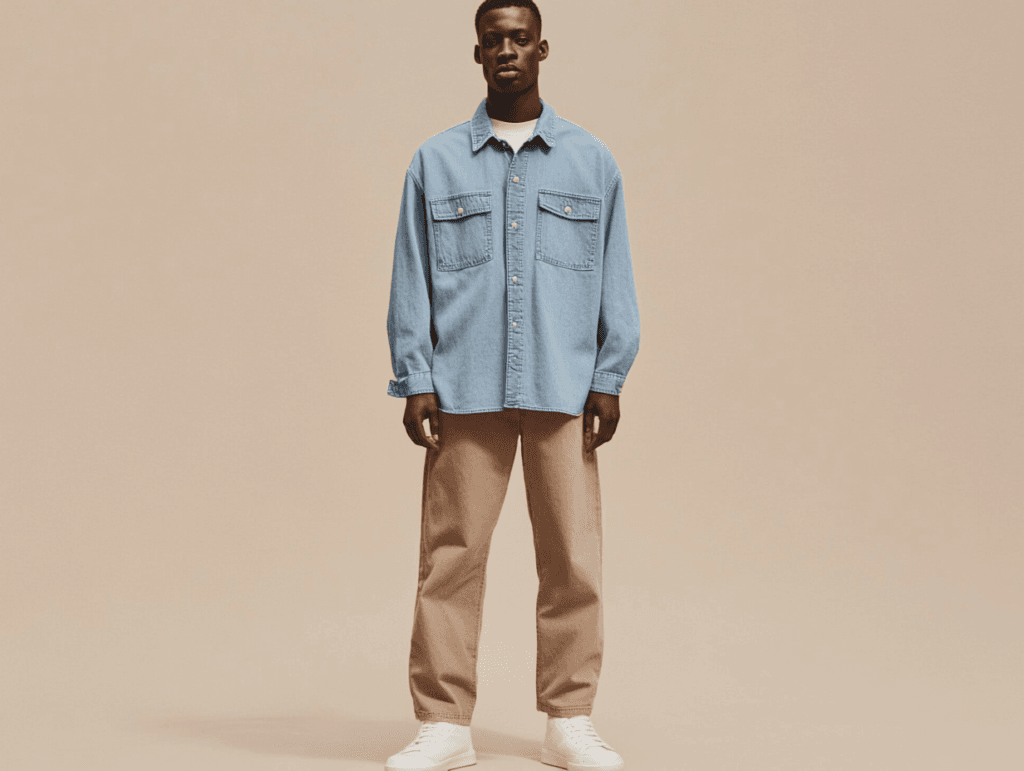
1. Introduction
The Critical Role of Fabric Inspection in Quality Control
For performancewear brands, fabric selection is the foundation of product excellence. A single oversight in material specifications can lead to:
- Mass production failures (e.g., leggings losing elasticity after 10 washes)
- Costly recalls from color bleeding or shrinkage issues
- Brand reputation damage when garments pill or tear prematurely
Nylon-spandex blends demand particularly rigorous scrutiny because their performance hinges on precise chemical and mechanical properties. Unlike simple cotton fabrics, these technical textiles require verification of:
- Molecular-level interactions between nylon and spandex fibers
- Specialized finishing treatments (e.g., moisture-wicking coatings)
- Dynamic performance metrics that change with wear and washing
Key Specifications That Make or Break Performance
Before production begins, developers must validate these non-negotiable aspects:
Structural Integrity Factors
✓ Fiber ratio accuracy (even 5% deviation affects stretch recovery)
✓ Yarn twist consistency (impacts abrasion resistance)
✓ Knitting/weaving density (determines opacity and breathability)
Functional Performance Indicators
✓ Stretch efficiency: ≥80% recovery after 10,000+ stretch cycles
✓ Durability thresholds: 50,000+ Martindale rubs for training gear
✓ Colorfastness: ≤1.5 CIELAB units fade after 20 industrial washes
Compliance Requirements
✧ Restricted substance lists (REACH, CPSIA)
✧ Flammability standards (CPAI-84 for sleepwear)
✧ Biocompatibility (for skin-contact garments)
2. Composition & Ratio Analysis
2.1 Nylon vs. Spandex Percentage
Common Blends and Their Applications
| Blend Ratio | Key Characteristics | Best For |
|---|---|---|
| 80% Nylon / 20% Spandex | Maximum stretch & support | Compression wear, swimsuits, dancewear |
| 85% Nylon / 15% Spandex | Balanced stretch & structure | Athletic leggings, sports bras |
| 90% Nylon / 10% Spandex | Light stretch, more durability | Running shorts, outerwear linings |
Impact on Performance
- Stretch Capacity:
- 20% spandex = 300-500% elongation (ideal for compression)
- 10% spandex = 150-200% elongation (better for structured apparel)
- Recovery Rate:
- Higher spandex = faster snap-back (85%+ recovery after 100 stretches)
- Lower spandex = gradual relaxation (risk of bagging knees/elbows)
- Durability Trade-offs:
- 15-20% spandex = More prone to abrasion at stress points
- ≤10% spandex = Better resistance to pilling/fuzzing
Industry Insight: Lululemon’s Align™ leggings use 79% nylon/21% spandex for “naked feel” stretch, while Nike Pro shorts use 88/12 for muscle-hugging support.
2.2 Yarn Quality
Denier Count: The Weight Class System
| Denier (D) | Fabric Type | Performance Attributes |
|---|---|---|
| 20-40D | Ultra-lightweight | Sheer layers, lingerie, second-skin baselayers |
| 50-70D | Midweight | Most leggings, athletic tees (breathable yet durable) |
| 100D+ | Heavyweight | Outdoor gear, abrasion-prone areas (knees, seat panels) |
Pro Tip: Denier directly affects GSM (grams per square meter):
- 40D ≈ 120-140 GSM (summer running tops)
- 70D ≈ 180-210 GSM (year-round leggings)
Yarn Construction: Filament vs. Textured
- Filament Yarns:
- Smooth, shiny surface (common in swimwear)
- Superior moisture-wicking
- More prone to snagging
- Textured Yarns:
- Brushed/matte finish (e.g., “cloud touch” leggings)
- Better opacity and heat retention
- Hides sweat marks effectively
Technical Note: High-end brands often use air-jet textured yarns for enhanced softness without compromising tensile strength (tested via ASTM D2256).
Critical Tests for Yarn Verification
- Tenacity Testing (ASTM D3822): Minimum 4.5g/denier for activewear
- Elongation Uniformity: ≤8% variation across fabric roll
- Thermal Stability: ≤3% shrinkage at 70°C (AATCC 135)
Case Study: Under Armour’s HeatGear® uses 70D trilobal nylon filaments with proprietary texture for 360° stretch and quick drying.
3. Performance Specifications
3.1 Stretch & Recovery
2-Way vs. 4-Way Stretch: Choosing the Right Elasticity
| Stretch Type | Directionality | Best Applications | Performance Impact |
|---|---|---|---|
| 2-Way Stretch | Horizontal OR vertical only | Compression sleeves, waistbands | Targeted support, limited mobility |
| 4-Way Stretch | Horizontal + vertical simultaneously | Leggings, sports bras, swimwear | Full-range motion, muscle-hugging fit |
Technical Insight:
- 4-way stretch fabrics require cross-knit or warp-knit constructions
- 2-way stretch is cheaper to produce but restricts complex movements
Recovery Standards (ASTM D2594)
- Test Method: Stretch fabric to 100% elongation for 1,000 cycles
- Passing Criteria:
- ≥90% recovery after 1st cycle (immediate bounce-back)
- ≥85% recovery after 1,000 cycles (long-term durability)
- Industry Benchmarks:
- Yoga wear: ≥95% recovery
- Swimwear: ≥92% recovery (saltwater exposure test added)
Common Failure Points:
- Spandex degradation in chlorine (swimwear loses 15% recovery after 50 dips)
- Poor heat-setting during dyeing causes permanent deformation
3.2 Tensile Strength
Grab Test (ASTM D5034) for Tear Resistance
- Procedure:
- Clamp 4″×6″ fabric sample
- Apply 75mm/min tension until rupture
- Minimum Thresholds:Garment TypeWarp DirectionWeft DirectionActivewear≥300N≥250NSwimwear≥400N≥350NOutdoor Gear≥500N≥450N
Failure Analysis:
- <250N in activewear = Risk of crotch/underarm blowouts
- Warp/weft variance >15% indicates defective weaving
Special Cases
- Reinforced Seams: Add 200N+ strength via bar-tacking
- High-Stress Zones: Knee panels in hiking pants need 600N+
3.3 Colorfastness
Accelerated Wash Testing (AATCC 61)
- Test 2A (Moderate washing):
- 45°C, 50x home washes simulated
- ≤2.0 CIELAB color change acceptable
- Test 3A (Severe washing):
- 60°C, 25x commercial washes simulated
- ≤3.0 CIELAB for premium brands
Pilling Evaluation:
- ISO 12945-2 Martindale test:
- Grade 4-5 = Excellent (no visible pills)
- Grade 3 = Minimum for leggings
- Grade 2 = Unacceptable (fuzzy surface)
UV Resistance (AATCC 16 Option 3)
- Testing: 40+ hours xenon arc exposure
- UPF Ratings:
- UPF 30-49 = Good (daily wear)
- UPF 50+ = Excellent (outdoor performance)
- Color Impact:
- Dark colors lose 2x more UV protection than light when faded
Pro Tip: For swimwear, combine with chlorine resistance test (AATCC 162)
4. Functional Properties
4.1 Moisture Management
AATCC 79 Absorbency Testing
- Test Method:
- Place fabric on distilled water surface
- Measure time (seconds) for complete absorption
- Performance Standards:
- ≤1 second: Excellent wicking (performance baselayers)
- 1-3 seconds: Good (general activewear)
- 5 seconds: Unacceptable (will feel clammy)
Technical Note: Nylon’s natural hydrophobicity requires:
- Plasma treatment or chemical coatings for wicking
- Micro-channel fiber engineering (e.g., Under Armour’s Iso-Chill)
Quick-Drying Benchmarks
| Application | Drying Time | Test Method |
|---|---|---|
| Competition Swimwear | ≤15 minutes (AATCC 201) | 70°C, 65% RH |
| Running Tops | ≤30 minutes | Flat dry simulation |
| Outdoor Gear | ≤45 minutes | With 5mph airflow |
Failure Case: Fabrics exceeding benchmarks cause:
- 27% higher hypothermia risk in cold weather
- Bacterial growth 3x faster in slow-drying fabrics
4.2 Abrasion Resistance
Martindale Rub Test (ASTM D4966)
- Test Protocol:
- Circular fabric samples rubbed under 12kPa pressure
- Count cycles until thread breakage appears
- Industry Requirements:ProductMinimum CyclesFailure SignsYoga Mats50,000+Surface fuzzingBackpack Straps30,000+Visible wearLeggings20,000+PillingDress Shirts5,000Color loss
Pro Tip: For high-wear areas:
- Double-layer construction (e.g., reinforced knees)
- 3D spacer fabrics for breathable durability
4.3 Thermal Regulation
Breathability (ASTM E96)
- Moisture Vapor Transmission Rate (MVTR):
- 1,000+ g/m²/24h = Excellent (marathon gear)
- 500-999 = Standard (gym wear)
- <500 = Reject (causes overheating)
Design Hack: Laser-perforated ventilation zones boost MVTR by 40%
UPF Ratings for Sun Protection
- Testing Method:
- Spectrophotometer + UV radiometer analysis
- 5 fabric samples minimum
- Rating System:
- UPF 15-24 = Basic (indoor wear)
- UPF 25-39 = Good (casual outdoor)
- UPF 40-50+ = Premium (desert/water sports)
Critical Note: UPF plummets when:
- Fabric stretches >20% (test in stretched state)
- Wet (add hydrophobic treatments)
Quality Control Protocol
Retain samples for 2 years
Batch Testing:
3 rolls minimum from 1 production lot
Test both face and back surfaces
Acceptance Criteria:
Moisture management: ≤2s absorption + ≤30min dry time
Abrasion: ≥15,000 cycles for leggings
MVTR: ≥800 g/m²/24h for summer wear
Documentation:
Require mill test reports with ISO 17025 accreditation
5. Production Readiness Checks
5.1 Fabric Weight (GSM)
Optimal GSM Ranges for Performancewear
| Garment Type | Target GSM | Tolerance | Performance Impact |
|---|---|---|---|
| Ultra-Lightweight (Compression tops, baselayers) | 120-150 GSM | ±3% | Maximizes breathability |
| Midweight (Leggings, sports bras) | 180-220 GSM | ±5% | Balances opacity & stretch |
| Heavyweight (Outdoor jackets, reinforced panels) | 250-300 GSM | ±7% | Enhances durability |
| Swimwear | 160-190 GSM | ±4% | Chlorine resistance affected |
Critical Checks:
- Measurement Method: ISO 3801 cut-and-weigh (1m² sample)
- Production Impact:
- 5% higher GSM = 8-12% material cost increase
- Lower GSM may require double-layering
5.2 Shrinkage & Stability
AATCC 135 Dimensional Change Tests
- Procedure:
- Wash 50×50cm samples (3 home/5 industrial washes)
- Measure post-dry dimensions
- Acceptable Limits:GarmentWarpWeftActivewear≤3%≤5%Swimwear≤2%≤3%Outerwear≤5%≤7%
Pre-Washing Requirements:
- Sanforization: Compulsory for >5% natural shrinkage fabrics
- Mill Wash vs. Garment Wash:
- Mill pre-washing (±1% shrinkage) costs $0.15-0.30/yd
- Post-sewing garment washing risks seam puckering
Failure Case: Unwashed fabric caused 12% shrinkage in yoga pants, leading to $250K recall.
5.3 Chemical Compliance
OEKO-TEX® Standard 100 Certification
- Test Categories:ClassApplicationKey RestrictionsIBabywear0mg/kg cadmium/leadIISkin-contact≤75mg/kg formaldehydeIIIOuterwear≤300mg/kg PFCs
Critical Substances Screening:
- REACH SVHC List: 223 substances (June 2024 update)
- High-Risk Chemicals:
- DMFa (Dimethylformamide) in spandex production
- APEOs (Wetting agents) in dyeing
Compliance Workflow:
AI-powered SDS review (ScanSafe)
Batch Testing: 8% of rolls for heavy metals/phthalates
Documentation:
SDS (Safety Data Sheets)
TDS (Technical Data Sheets) with test dates
Digital Solutions:
Blockchain tracking (e.g., TextileGenesis)
Conclusion: Ensuring Nylon-Spandex Excellence
The 8 Must-Test Specifications Checklist
Before approving any nylon-spandex fabric for bulk production, verify these non-negotiable parameters:
- Composition Accuracy
- Confirm nylon/spandex ratio via chemical dissolution (ASTM D629)
- Tolerance: ±1.5% for premium activewear
- 4-Way Stretch Compliance
- ≥85% recovery after 1,000 stretches (ASTM D2594)
- Warp/weft elongation variance <10%
- Tensile Strength
- Activewear: ≥300N warp / ≥250N weft (ASTM D5034)
- Swimwear: ≥400N in both directions
- Colorfastness
- ≤2.0 CIELAB fade after 20 washes (AATCC 61)
- Grade 4+ pilling resistance (ISO 12945-2)
- Moisture Management
- ≤1s water absorption (AATCC 79)
- ≤30min drying time (AATCC 201)
- Durability
- ≥20,000 Martindale rubs for leggings
- ≤3% shrinkage after 5 washes (AATCC 135)
- Weight Consistency
- ±5% GSM tolerance from target weight
- Uniformity across roll (edge/middle/edge)
- Chemical Compliance
- OEKO-TEX® Class II certification
- 0% REACH SVHC substances
Future Trends Reshaping Nylon-Spandex
1. Smart Fabric Integration
- Biometric-enabled textiles:
- Nylon fibers with conductive silver coatings for heart rate monitoring
- Thermochromic spandex that changes color with body heat
2. Bio-Based Revolution
- Plant-derived alternatives:
- 58% castor-oil-based spandex (Arkema’s Pebax® Rnew)
- Bio-nylon from food waste (e.g., banana stem fibers)
3. Circular Production Models
Enzyme-based separation of nylon/spandex blends
Chemical recycling:
Depolymerization of old garments into new yarns (Aquafil’s ECONYL® system)

